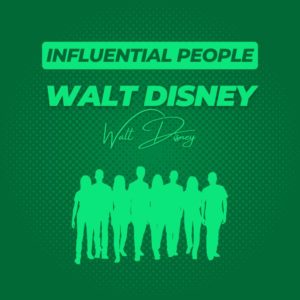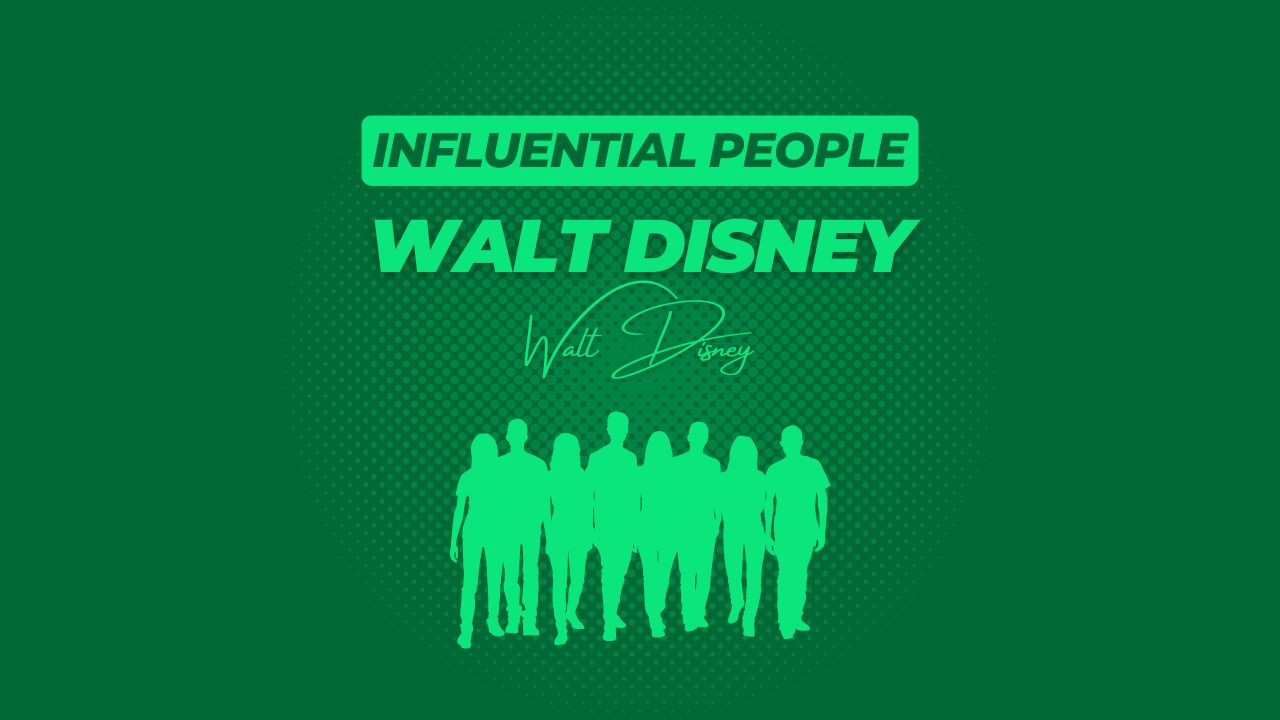Introduction to Walt Disney
Walt Disney, a name synonymous with imagination and timeless stories, transformed the landscape of animation and left an indelible mark on the global entertainment industry. From humble beginnings as a cartoonist in the 1920s, Disney ventured into the world of animated films, creating a legacy through iconic characters like Mickey Mouse and timeless classics such as “Snow White and the Seven Dwarfs.” His innovative spirit not only pioneered new technologies in animation but also envisioned and brought to life the world’s first true theme park, Disneyland, altering the concept of family entertainment forever.
animated films, creating a legacy through iconic characters like Mickey Mouse and timeless classics such as “Snow White and the Seven Dwarfs.” His innovative spirit not only pioneered new technologies in animation but also envisioned and brought to life the world’s first true theme park, Disneyland, altering the concept of family entertainment forever.
As we delve into Disney’s rich narrative, it’s compelling to explore how his mastery in storytelling—characterised by its universal appeal and emotional depth—can inspire individuals today, particularly in the context of online dating. In a world where personal narratives shared on dating profiles can determine the course of personal connections, Disney’s ability to craft enchanting stories that resonate with diverse audiences offers valuable insights. This article will look at how the elements of storytelling, as championed by Disney, can enhance personal narratives and foster meaningful interactions in the digital age of romance.
Early Life and Inspirations
Walter Elias Disney was born on December 5, 1901, in Chicago, Illinois, and grew up in Marceline, Missouri, a small town that would later inspire the idyllic Main Street, U.S.A. in Disneyland. The son of a contractor and a teacher, Disney showed an early interest in drawing and painting, a passion encouraged by a local doctor who paid him to draw horse pictures. His family later moved to Kansas City, where Walt attended the Kansas City Art Institute and took up a paper route for his father.
Despite the burgeoning artistic talent, Disney faced numerous setbacks in his early career. His first venture, Laugh-O-Gram Studio in Kansas City, produced short animated films but went bankrupt in 1923. Undeterred, Disney moved to Hollywood with nothing but a few drawing materials, $40, and a completed film reel in his suitcase. In Hollywood, alongside his brother Roy O. Disney, he set up the Disney Brothers Studio.
Walt Disney’s big break came with the creation of Mickey Mouse in 1928, alongside Ub Iwerks, though Mickey was initially named Mortimer until Walt’s wife, Lillian, suggested the change. Mickey Mouse made his debut in “Steamboat Willie,” the first animated cartoon with synchronised sound, which became an instant hit. This success marked the end of Disney’s initial failures and the beginning of an illustrious career, demonstrating his resilience and perseverance. Disney’s early life and challenges laid the foundation for his creative vision, teaching him the importance of storytelling, innovation, and determination—all qualities that would define his later works and monumental impact on global entertainment.
Disney’s Philosophy of Storytelling
Walt Disney’s storytelling philosophy was centred around universal appeal, emotional engagement, and a deep sense of optimism. He believed in crafting stories that not only entertained but also imparted moral lessons, inspired dreams, and stirred the imagination across all ages. Disney’s approach often involved anthropomorphising animals to create relatable, endearing characters that could convey complex emotions and experiences in a way that was accessible to both children and adults.
One of the core elements of Disney’s storytelling was his emphasis on emotional connection. Whether it was the joy of Dumbo taking flight or the poignant separation of Bambi from his mother, Disney’s films consistently evoked deep emotional responses that resonated with audiences worldwide. This ability to tap into universal emotions made his stories profoundly impactful, often leaving lasting impressions on viewers.
The themes of love, bravery, and perseverance are recurrent in Disney’s narratives. In “Cinderella,” for instance, the themes of hope and resilience against adversity culminate in a romantic resolution that promises happiness and justice. Similarly, “Beauty and the Beast” explores the transformational power of love and the importance of looking beyond superficial appearances to the beauty within—a message that mirrors the foundational concepts of building personal relationships, particularly relevant in the context of online dating.
In exploring Disney’s storytelling through the lens of personal connection and romance, one can see how these narratives encourage individuals to believe in the possibility of ‘happily ever afters’—a hopeful sentiment that aligns closely with the aspirations of those seeking meaningful connections in online dating. Disney’s stories teach us that while adversity is part of life, perseverance and kindness can lead to rewarding connections, a message that enhances the narratives shared on dating profiles, encouraging authenticity and optimism in the pursuit of personal relationships.
Impact on Animation and Film
Walt Disney’s innovative spirit profoundly shaped the animation industry, introducing pioneering techniques that set new standards for filmmaking. One of his earliest and most significant contributions was the introduction of synchronised sound in the 1928 Mickey Mouse cartoon “Steamboat Willie.” This technological breakthrough not only revolutionised animation but also marked the beginning of the end for silent films, ushering in a new era where sound and visuals worked hand in hand to enhance storytelling.
Disney’s drive for innovation didn’t stop there; he was also a pioneer in the use of Technicolor in animation. His Silly Symphonies series, starting with “Flowers and Trees” in 1932, was among the first animations to use full-colour processes, showcasing Disney’s commitment to enhancing the visual experience of his stories. This not only enriched the visual appeal of animated films but also demonstrated how colour could be used to convey emotions and themes more effectively.
Perhaps Disney’s most notable film achievement was the production of “Snow White and the Seven Dwarfs” in 1937, the first full-length animated feature in English and in Technicolor. This monumental project was a significant risk but ultimately paid off, setting the standard for future animated features and establishing Disney as a leading figure in global entertainment. “Snow White” demonstrated that animated films could be emotionally complex, financially successful, and culturally significant.
Beyond film, Disney’s vision extended to themed entertainment, culminating in the creation of Disneyland in 1955. This theme park was an unprecedented project that brought his storytelling talents into a physical realm, allowing visitors to immerse themselves in a tangible world of imagination. Disneyland was not just a theme park but a narrative experience, with each ride and attraction contributing to a larger storytelling universe.
Throughout his career, Disney’s contributions were recognised with numerous awards and accolades. He holds the record for the most Academy Awards won by an individual, having received 22 Oscars from 59 nominations. His legacy includes honorary degrees from Harvard, Yale, and the University of Southern California, and a Congressional Gold Medal awarded to him by Congress in 1968.
Walt Disney’s impact on animation and film is undeniable. His innovations have permanently changed the way stories are told and experienced, not just in film but across all media, influencing countless artists and creators in the entertainment industry.
Disney’s Legacy and Influence on Culture
Walt Disney’s influence extends far beyond the confines of film and animation, permeating various facets of culture and media around the world. His creations have not only crafted a unique type of cultural dialogue but have also set a standard for storytelling that influences literature, music, visual arts, and more. Disney’s ability to connect with audiences on a profound level has made his brand synonymous with creativity, innovation, and magic.
Disney’s narratives often weave complex themes of romance, adventure, and heroism, ideals that resonate universally. These stories have shaped cultural expectations and perceptions, especially in terms of romance and heroism. For example, films like “Sleeping Beauty” and “The Little Mermaid” present romantic ideals that emphasise true love and its transformative power, concepts that echo through modern day narratives and are reflected in the personal aspirations seen in online dating profiles.
Moreover, Disney’s portrayal of adventure and exploration has inspired individuals to seek out new experiences and believe in the possibility of discovery and self-growth. This is evident in the adventurous spirits of characters like Simba from “The Lion King” or Elsa from “Frozen,” who embark on journeys that lead to profound personal transformations and insights. Such themes encourage viewers to venture beyond their comfort zones, mirroring the explorative nature of forming new relationships online.
Disney’s influence is also palpable in his role as a cultural ambassador. The international reach of his films and characters has bridged cultural divides, bringing diverse audiences together through shared emotional experiences and universal storytelling. Disney parks around the globe serve as cultural hubs where these narratives are celebrated and lived, further embedding Disney’s influence into global culture.
Additionally, the Disney brand has been at the forefront of technological advancements in media, from pioneering animation techniques to integrating digital technologies in storytelling and theme parks. This ongoing innovation continues to influence the broader media landscape, pushing boundaries and setting new trends in entertainment.
The enduring impact of Disney’s work demonstrates his pivotal role in shaping not just entertainment but also cultural ideals and values. His legacy continues to inspire new generations to dream big, believe in good overcoming evil, and the power of love and heroism, echoing the timeless appeal of Disney’s vision.
Parallels Between Disney’s Stories and Online Dating
The narrative techniques employed by Walt Disney in his films share intriguing parallels with the storytelling evident in online dating profiles. Both realms utilise storytelling as a fundamental tool to forge emotional connections and engage audiences or potential partners in a meaningful dialogue.
Crafting a Personal Narrative: Much like a well-crafted Disney film, an effective online dating profile tells a compelling story of the individual. Disney’s characters often start with a clear, relatable background that outlines their desires, struggles, and dreams—elements that are crucial in forming an emotional bond with the audience. Similarly, in online dating, a profile that shares personal anecdotes, hopes, and experiences in a narrative form allows others to feel a connection, making the person behind the profile more relatable and appealing.
Emotional Engagement: Disney’s mastery in drawing viewers emotionally into his stories is a key element that online daters can emulate. By sharing vulnerabilities, triumphs, and personal journeys, a dating profile can engage readers on an emotional level, much like viewers empathise with characters such as Mulan or Aladdin overcoming adversity. This emotional engagement is crucial, as it lays the groundwork for empathy, interest, and potentially deeper connections.
Theme of Transformation and Growth: Many Disney stories center on themes of personal growth and transformation—qualities that are often highlighted in successful dating profiles. Whether it’s Ariel finding her voice or Elsa embracing her powers, Disney characters often undergo significant personal development. Profiles that reflect a person’s journey of self-discovery or personal growth can resonate deeply, suggesting not only who the person is but also how they have evolved, akin to a character’s development in a Disney narrative.
The Role of Hope and Optimism: Disney films are renowned for their themes of hope, resilience, and the belief in a positive outcome. These themes are powerfully resonant in online dating contexts, where individuals are often motivated by a hopeful search for a meaningful connection. By infusing a dating profile with optimism about future possibilities and experiences, it mirrors the quintessential ‘happily ever after’ that Disney films promise.
Universal Appeal: Just as Disney stories have a broad appeal, transcending age and cultural backgrounds, effective online dating profiles are crafted in a way that they speak to a wide range of potential matches. They tap into universal emotions and experiences that resonate widely, increasing the likelihood of forming connections.
The storytelling techniques pioneered by Disney in his films can offer valuable lessons for creating engaging and emotionally rich online dating profiles. By adopting a narrative approach that includes emotional depth, personal growth, and optimism, online daters can increase their chances of connecting with others on a meaningful level, potentially leading to their own happy endings.
Conclusion
Walt Disney’s legacy is a testament to the profound impact that one visionary can have on the world. His contributions to the entertainment industry and cultural storytelling have been monumental, setting new benchmarks in animation, thematic depth, and narrative innovation. Disney transformed the landscape of animation with pioneering techniques such as synchronised sound and full-colour animation, and his storytelling philosophy—centered on emotional engagement, universal appeal, and moral values—reshaped how stories are told and experienced across generations.
Disney’s films and characters continue to influence a wide range of media, from film and television to digital platforms, and even the ways in which stories are used in marketing and personal branding, like online dating profiles. His works have cultivated a culture that values creativity, imagination, and the pursuit of dreams, echoing through countless other creative endeavors and everyday interactions.
For online daters, Walt Disney’s life and creations offer valuable lessons. His optimism and unwavering belief in happy endings serve as a powerful reminder of the importance of maintaining a positive outlook, even in the face of adversity or challenges in personal relationships. Disney’s stories encourage individuals to be protagonists in their own lives, embracing their journeys with hope and an open heart.
Moreover, Disney’s ability to create relatable characters that grow and evolve through their stories can inspire online daters to present themselves authentically, highlighting their personal growth and the journeys that have shaped them. This approach not only enhances their profiles but also fosters deeper connections based on genuine understanding and shared values.
In essence, Walt Disney’s enduring legacy teaches us that stories are not just entertainment—they are powerful tools for connection, reflection, and inspiration. Whether through the screen or through the stories shared in online dating profiles, the magic of storytelling has the power to bring us together, helping us find and appreciate the enchantment in our own lives.






